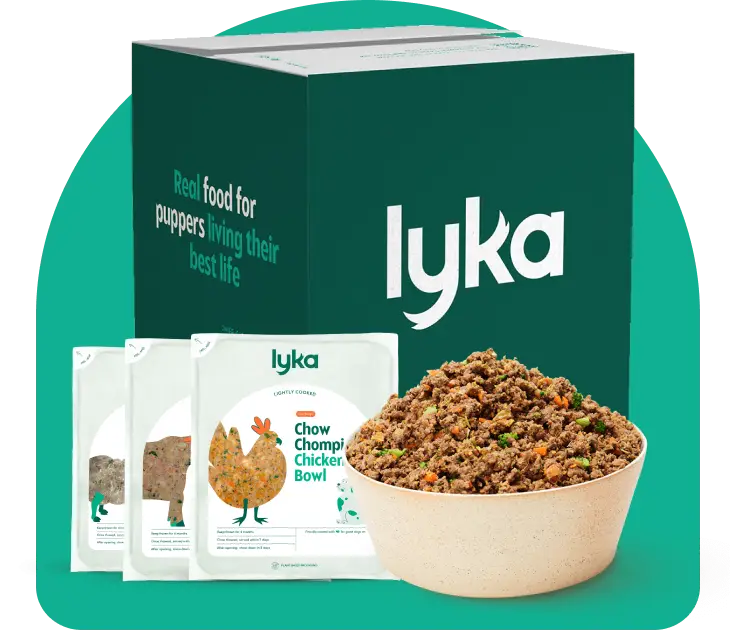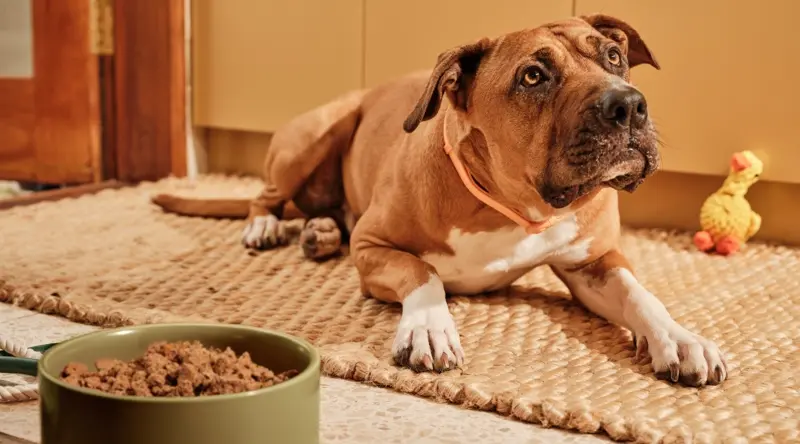It's a perfect afternoon at the park, and you're all set for a game of fetch with your dog.
But when you toss the ball, something's off — they're not picking it up and returning it with their usual enthusiasm. Treats don’t seem to interest them either.
What's going on? Could it be your dog’s teeth?
Gum disease (periodontal disease) is a bacterial infection that can make every bite, chew, or game of fetch a painful experience for your dog.
The good news? With the right care and early detection, dental issues can be prevented or treated. Let’s take a closer look at the stages and symptoms of gum disease.
What is gum disease in dogs?
Your dog’s mouth contains a microbiome: trillions of micro-organisms living in harmony with your dog. When your dog eats, the bacteria in their mouth are fed too.
Regular brushing can keep the microbiome in a healthy balance, but if harmful bacteria colonies are allowed to grow, they infect the gum line, causing gum disease.
🐶 Read more: Improve your dog's gut health: a vet expert's guide to the microbiome →
How to prevent gum disease
Like us, dogs need to have consistent dental hygiene routines to keep the oral microbiome in balance. Taking care of your dog's teeth can include brushing, dental toys and chews, dental supplements, and regular veterinary check-ups.
A study has shown that high carbohydrate, dry food diets can increase the bacteria associated with periodontal disease in cats. Although there needs to be more research done on dogs, it does indicate a connection between diet and dental disease.
A high-protein, low-carbohydrate diet containing ingredients like kelp can promote microbiome health and tartar control in your dog’s mouth. Ascophyllum nodosum, is a species of kelp that contains a high concentration of iodine which fights gum disease pathogens and bacteria causing bad breath. It also has natural anti-inflammatory, antiviral, and antibacterial properties to support your dog’s oral health.
🐶 Read more: Protecting your dog’s dental health: how to clean your dog’s teeth →
How to treat gum disease
Even if you’re diligent with your dog’s dental care you may still need support from your veterinarian.
Speak to your vet about what they recommend for your pup. They might suggest a dental clean: this is a routine procedure under general anaesthetic, which comes with some risks. While your dog is asleep your vet will descale their teeth to remove any plaque buildup. They’ll also check for any signs of cavities (caries), loose teeth, or abscesses.
The stages of gum disease
Healthy dog teeth are clean and white, with pink gums that show no signs of redness or inflammation.
)
Stage 1: Gingivitis
This is the early stage of gum disease caused by a build-up of bacteria along the gum line.
If gingivitis is left untreated, the bacteria can continue to flourish and lead to tartar: a sticky bacterial film on the teeth that hardens into brown plaque.
Key signs:
Red, inflamed gums (you may notice a red line along the gum line)
Occasional bleeding when brushed
Plaque build-up
Later stages of gum disease will show these key signs and additional symptoms.
Knowing each of the stages can help you to determine what might be causing your dog’s oral problems. This is not designed to replace the advice of your veterinarian, but it can help you understand gum disease so you can have an informed conversation with your vet.
)
Stage 2: Early periodontal disease
If gingivitis isn’t treated, bacteria can infect the pockets between the gums and teeth, impacting the parts that hold the teeth in place. This can lead to pain, receding gums, and some bone loss.
It’s hard to see your dog in pain and discomfort, but toothache may not be obvious at first. You may notice a few changes in behaviour, like being reluctant to play, eat, or chew their toys or bones. Whenever there’s a change in your dog’s ‘normal’ behaviour (which is different for every dog), it’s time for a conversation with your vet.
Additional symptoms:
Swollen gums
Mild pain
Bleeding gums
Possible discomfort when eating
)
Stage 3: Moderate periodontal disease
In this stage of gum disease, the infection travels deeper into the roots and jaw bones loosening the teeth and potentially causing painful abscesses.
Additional symptoms:
Loose teeth or tooth loss
Pain when eating
)
Stage 4: Severe periodontal disease
At this point the damage to the dog’s gums and bone is extensive, causing significant tooth loss and pain. The dog may refuse to eat and lose weight as a result.
If bacteria in the infected mouth enter the dog’s bloodstream, it can cause diseases in their vital organs.
Additional symptoms:
Pseudo-anorexia (refusal to eat)
Weight loss
Mouth ulcers
Painful oral cavities
)
Oral care FAQs
We asked our Lyka community what they would like to know about dental care. Here’s a selection of their frequently asked questions:
1. How do I introduce brushing to my puppy?
Slowly and gradually is key. The introduction of oral healthcare routines at an early age helps your dog get used to their teeth being touched and cleaned.
Before you start, make sure you have the right equipment, including dog-friendly toothpaste! Our guide to brushing your dog’s teeth will tell you everything you need to know.
2. How do I prevent tartar build up in my little dog?
You can help to prevent tartar with a holistic approach to dental care.
Begin with nutrition: choose real food meals that are low in carbohydrates, as sugar can promote bacterial growth. Look for active ingredients like kelp which fights tartar at a molecular level, and coconut that has natural antibacterial properties.
3. How do I balance the benefits of a veterinary scale and polish with the stress of general anaesthetic?
Dental treatments, like a scale and polish, are done under general anaesthesia so the dog is completely still throughout the procedure.
It’s important to discuss this type of treatment with your vet so you can understand the risks involved with general anaesthesia.
Gum disease is progressive and can cause lasting damage to your dog’s teeth and gums, and even affect their vital organs if left untreated. As with all health concerns, prevention is always better than a cure.
4. My dog has bad breath, what do I do?
If your dog’s kisses make you recoil, their bad breath could be a sign of gingivitis or gum disease. Speak to your vet about your concerns and check your dental care routines are effective.
5. Should I give my dog bones to clean their teeth?
Bones can be used to support a more comprehensive dental care routine, but you should always check with your vet first. Our guide on how to clean your dog’s teeth looks at bones, dental chews, and other dental aids to give you a thorough understanding of dental care for dogs.
How real food plays a part in preventing gum disease
It’s never too late to start seeing the benefits of an oral hygiene routine for your dog.
Pairing a diet rich in targeted ingredients, like kelp, with holistic dental care is a proactive step toward preventing gum disease and ensuring your dog enjoys strong gums, sparkling teeth, and fresher breath.
Start your dog’s journey to optimal oral health and see the difference a vet-formulated diet can make.
)
)
)

)
)
)
)
